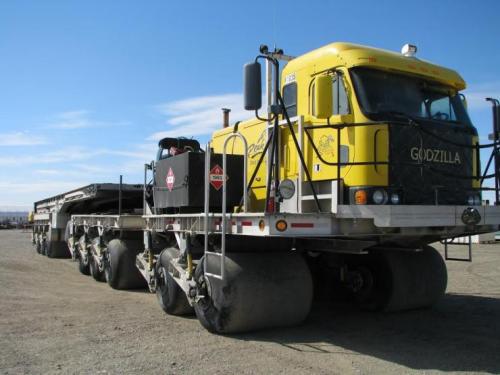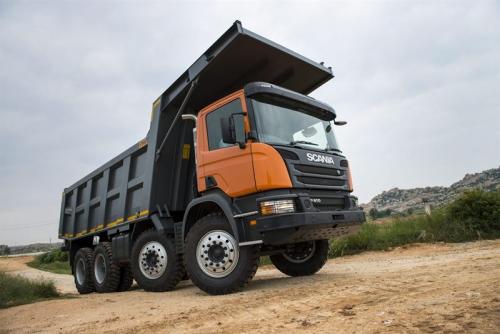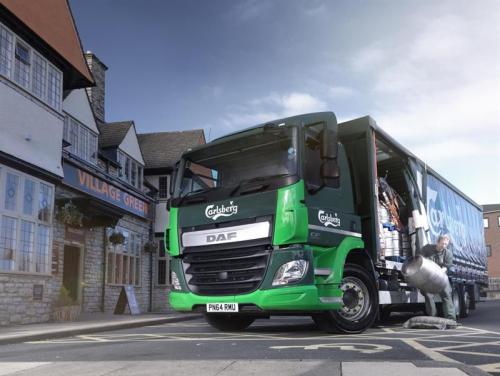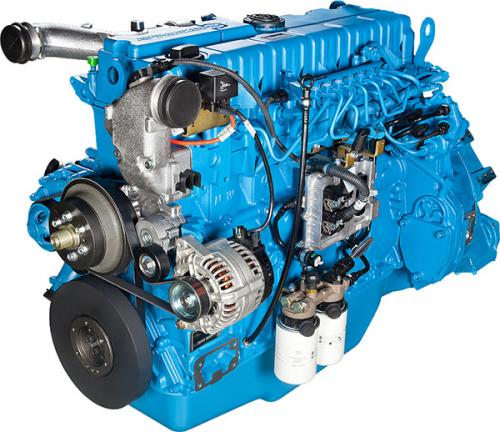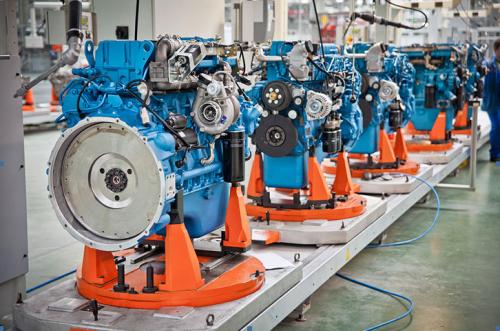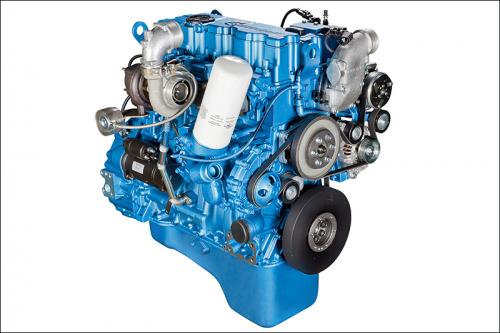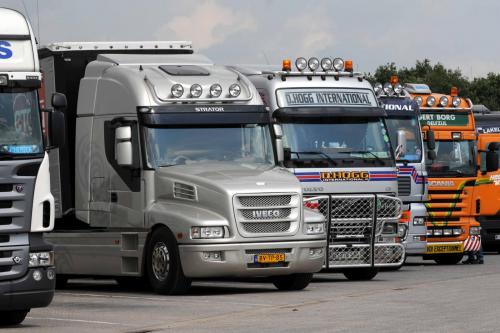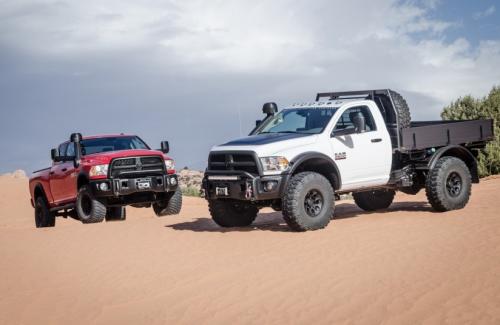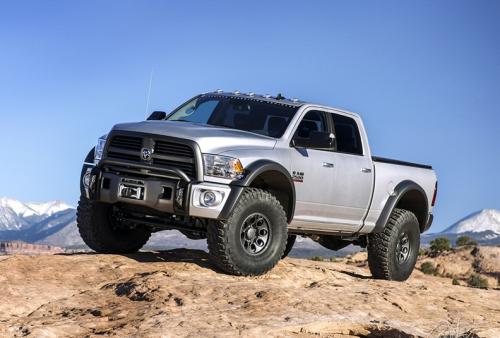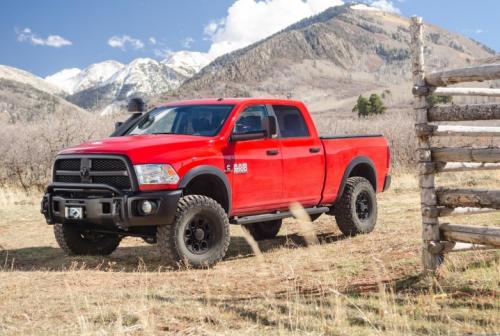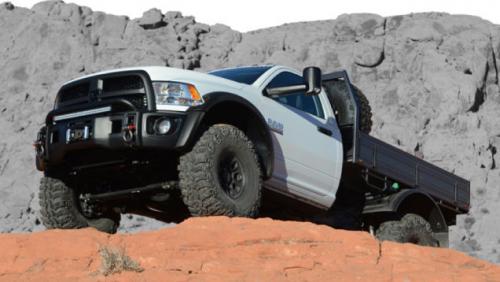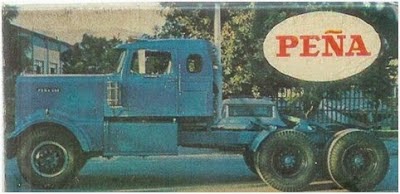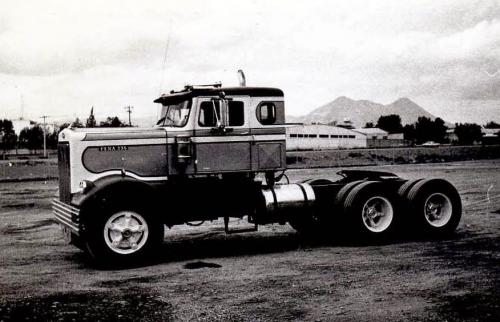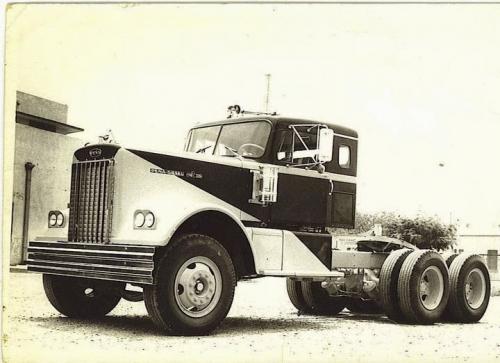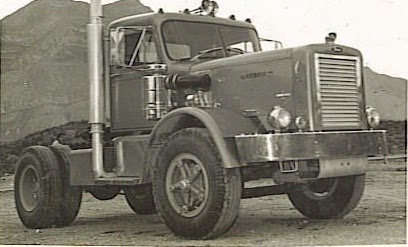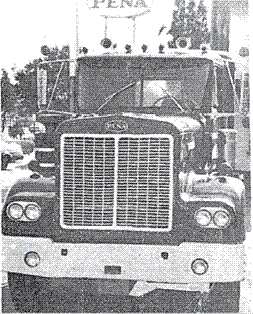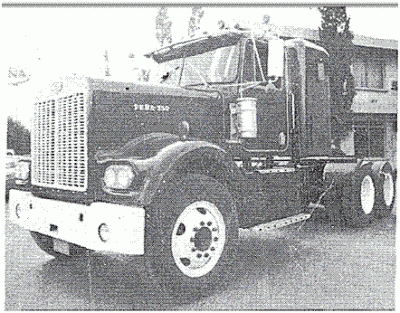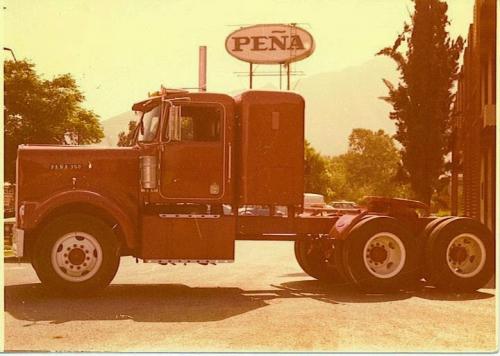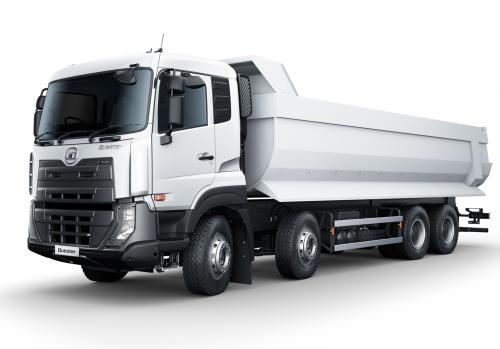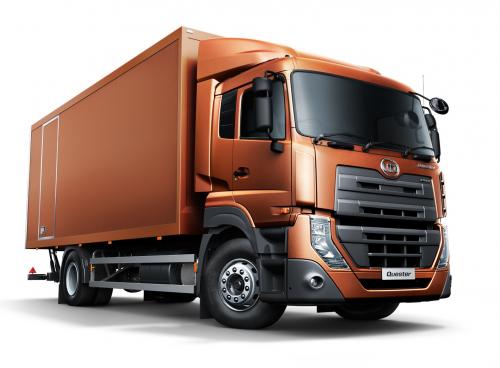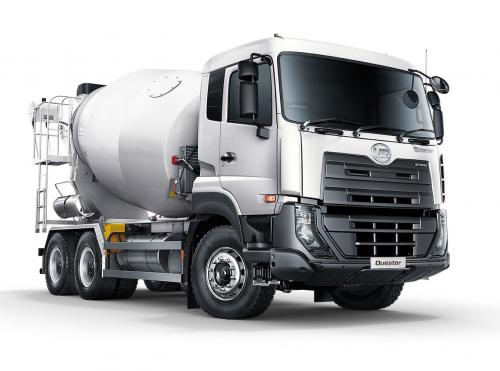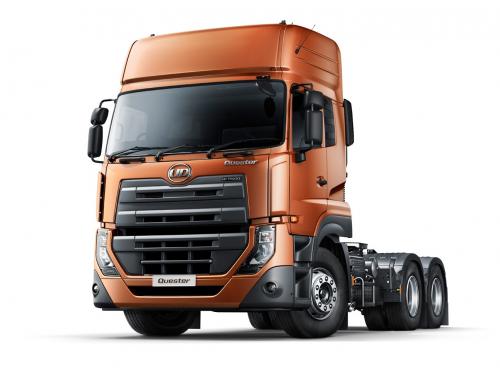
kscarbel2
Moderator-
Posts
18,539 -
Joined
-
Days Won
112
Content Type
Profiles
Forums
Gallery
Events
Blogs
BMT Wiki
Collections
Store
Everything posted by kscarbel2
-
Isn't that a rebuildable tie-rod end?
-
The Detroit News / April 16, 2015 The U.S. House voted Thursday to repeal the 99-year- old U.S. estate tax amid a partisan clash over whether the government should break up concentrated wealth or make it easier to pass along assets to the next generation. The House passed the bill 240-179 Thursday. The tally was mostly along party lines; seven Democrats voted for passage and three Republicans voted no. The measure would make it possible for the wealthiest Americans to do what the other 99.8 percent already can do — pass their assets to their children without a federal estate tax. The measure would save taxpayers — and cost the U.S. government — $269 billion over a decade. “It is, at its heart, an immoral tax,” said Representative Kevin Brady, a Texas Republican. In Michigan, about 100 estates would face the estate tax in 2016, according to estimates by the nonpartisan Center on Budget and Policy Priorities. Nationally, roughly 2 in 1,000 people who die owe estate tax. President Barack Obama has threatened to veto the bill, noting that the Republican budget plan adopted by the House in March relies on revenue from the estate tax. Democrats say repealing the tax is a giveaway to the rich, since the only families that pay it have many millions in assets. The bill now goes to the Senate where Democrats appear to have enough votes to block it. “It penalizes those who have worked all their lives and reinvested in their family businesses,” said Rep. Adrian M. Smith, a Nebraska Republican.
-
International Business Times / April 15, 2015 Overflow from a runaway river has closed the Dalton Highway in Alaska, the famous "Ice Road" that truckers use to carry supplies to northern oilfields. Alaskans often refer to the Dalton as the road to the bank because 90 percent of the state's revenue comes from oil. Kristi Krueger drives three hours north from Fairbanks, Alaska, each morning to stand near mile 58 on the Dalton Highway next to where a crew is scooping out contaminated soil from an oil spill. Her job is to hold up a sign that signals to truckers when they can safely pass. But for the last week, traffic along the highway, which serves as the only artery from the state’s cities to the northern oilfields, has all but stopped. Krueger hasn’t had all that much to do. "It's eerily quiet right now," she says. “We have walkie-talkies and so we chitchat on those." Alaskans refer to the Dalton as the road to the bank because the vast majority of the state's revenue comes from taxes on oil produced at the end of the highway. A runaway river has caused massive flooding to form a giant ice sheet over the only route to the state's lucrative northern oilfields, threatening the supply chain that companies rely on to support workers and daily operations. Critical shipments of food, supplies and equipment have already been delayed by a week. An ongoing shortage may cause companies to pull back operations or turn to far more expensive ways to transport these goods. On a typical day, at least 100 truckers would make the 15-hour drive from Fairbanks to Prudhoe Bay to carry fuel, food, equipment and other supplies to workers who are staffing oilfield operations for BP, ConocoPhillips, ExxonMobil and a host of other companies. On Sunday, Krueger said she had directed only about 15 trucks over the past few days. The shallow, braided Sagavanirktok River flows alongside the highway that Krueger flags for the road’s final miles. But over the past few weeks, ice has uncharacteristically formed along its bottom and pushed the river’s flow up from the channel and onto the road. The overflow runs several feet thick in some places, and in other spots, it immediately froze into a thick mass of ice. The sudden flooding has made one of the state’s most critical highways virtually impassable. The road has been closed for most of the past week, forcing Gov. Bill Walker to declare a state of disaster to loosen up funds and permit requirements so the state’s Department of Transportation could double down on its efforts to carve a roadway out of the mess. The agency has already exhausted its emergency funds and plans to request federal money to cover the remaining costs. Alaska's Senate Finance Committee has committed $5 million to the cause. “You're standing on a road that is 3 feet of ice," Meadow Bailey, public relations officer for the Alaska Department of Transportation and Public Facilities, says. “It almost looks like you’re on a glacier -- everything is very blue, it's white and blues for as far as you can see.” Trucks that continued to drive the route as conditions worsened sloshed through several feet of water and at times drove alongside a rushing river that ran higher than the road itself. A crew of 28 state employees and private contractors has been working around the clock, using 26 pieces of equipment to stop the overflow. The crew is building berms along the road from snow and digging culverts through the ice to divert the water. Next week, crop planes will begin dropping large batches of black sand on the river to absorb heat and melt the ice so its flow may return to normal. In the meantime, truckers with hundreds of loads destined for the oilfields have been waiting in Fairbanks and along the road. “There are probably 100 to 150 trucks sort of stacked up along the roadway,” Aves Thompson, executive director at the Alaska Trucking Association, says. Two communities and the dozen oil and gas companies they serve wait at the other end, in Deadhorse, a town of roughly 2,000 people, and Prudhoe Bay, a community of around 5,000 whose name is synonymous with oil. Oil Keeps Flowing Amid low oil prices that have already gutted the state budget, a road closure that threatens to compromise oilfield operations is unwelcome news. About a dozen energy companies are exploring for oil in the region, which is home to America’s third-largest oilfield. Though not all of them are currently drilling for crude, even surveyors must be fully supported on the North Slope, where all supplies for daily life are flown or trucked in. “We need to be sure that the oil keeps flowing,” Thompson says. “We just want to do everything we can to be sure there is no interruption.” Crude oil is transported from Prudhoe Bay through the Trans-Alaska Pipeline System, which extends 800 miles to a port in Valdez, Alaska. Though the pipeline runs parallel to the Dalton, its flow is not directly jeopardized by the flood or the road's closure. The Dalton Highway's natural disaster comes at a bad time. There is a narrow window between January and May, when trucks can access remote sections of the oilfields by driving over temporary ice roads to places that typically are only accessible by barge or airplane. One of those areas is Point Thompson, where ExxonMobil has invested $2 billion to build a natural gas plant. BP and ConocoPhillips have both said they are using fuel and supply reserves to continue operations as normal while conserving the resources they have on hand. “It's been a problem for the better part of a month, and those reserves are only going to last so long," said Josh Kindred, environmental counsel at the Alaska Oil and Gas Association. "They've looked into alternative methods of getting fuel up there, which are of course more costly.” Some companies have started to fly fuel in or hire machines called rolligons, whose extra-wide wheels gently roll over the frozen tundra, to reach trucks with supplies that are stuck along the road. Caitlin Jelle, project engineer at Prudhoe Bay's Peak Oilfield Service Company, which operates a fleet of 14 rolligons, says it takes the machines 15 hours to make the 40-mile round-trip from Deadhorse to pick up the stranded loads. She says the approach is working so far, though slightly warmer springtime temperatures make the trek a challenge. “We're being very careful. It's not an ideal time to put in a tundra route,” she says. “We are definitely typically parking our rolligons this time of year, not bringing out every one we have.” So far, oil production has remained stable despite the closure of the Dalton Highway, and Kindred says he doesn’t expect that to change. Transportation Woes Meanwhile, Thompson estimated that 700 to 800 loads were waiting to be transported from Fairbanks to the North Slope by truck on Tuesday. For drivers who make a living on the road, a closure can wreak havoc on schedules and bottom lines. “The drivers on a company payroll are being paid. Some of the owner-operators are having to absorb that cost,” he says. “It's costly for everybody. It's been very, very disruptive.” Some truckers dropped off loads at staging areas alongside the highway so they could return to Fairbanks and pick up more cargo in an attempt to stay productive during the wait. The worst conditions remain between miles 390 and 405 of the 414-mile highway, allowing truckers to get most of the way to Prudhoe Bay before hitting the closure. A typical trip up the “haul road” from Fairbanks takes 10 to 15 hours, so they save significant time by retracing only a fraction of that distance. Truckers who regularly drive the haul road are no strangers to inclement weather -- their struggles against frigid temperatures and freak blizzards have been chronicled in the History Channel series “Ice Road Truckers” -- but Thompson says a closure of this length is extremely rare. “There will be times when there's a snowstorm, so you have to wait out the snowstorm for maybe a few hours, but in this case, it's a once-in-a lifetime event,” he says. While truckers are feeling the pinch, Everts Air, a Fairbanks airline that specializes in hauling cargo to remote locations throughout Alaska, has added four to 12 flights a day on its largest aircraft to Deadhorse and other airstrips that directly serve the oilfields. The company typically runs three to six flights a day, but business has picked up substantially since the overflow began, Robert Ragar, vice president of contractual business, says. Slow Progress Earlier this week, the Department of Transportation temporarily opened the Dalton to small convoys of about 30 trucks carrying critical loads to drive a single open lane in either direction at a time. Though the road remains closed, the department announced on Tuesday that it had allowed 204 vehicles to pass through by the end of the day. Krueger, stationed along the highway with her flag, had started to notice a slight uptick in traffic. Though the problem has not been fully resolved, opinions about whether the overflow will continue to impede normal operations are mixed. At Everts Air, Ragar is bracing for the long haul. “This particular road closing on the Dalton has not been experienced in anybody's memory -- never,” he says. “There seems to be a belief that this is going to go on for a while.” Photographs: http://www.ibtimes.com/trucking-along-alaskas-ice-road-northern-oilfields-freezes-halt-1883163
-
Press Release / April 15, 2015 International Truck announced today the availability of an additional fuel efficiency package for the International ProStar ES designed for the Canadian market with their need to operate up to 110,000 gross combined weight rating (GCWR). First introduced in December 2014, the ProStar ES, short for "efficiency specification," features industry-leading aerodynamics and powertrain/transmission combinations, and a number of other advanced technologies. "We are committed to technology, innovation, tools and services that deliver industry-leading uptime and low total cost of ownership," said Bill Kozek, president Truck and Parts, Navistar. "The ProStar ES continues to leverage the latest advancements and has established a reputation in the industry for being one of the most fuel efficient, highest quality trucks on the road." This new International ProStar ES spec features: The lowest wind averaged drag coefficient in the industry. Its supremacy in crosswinds makes it one of the most aerodynamic tractors, in real-world conditions, on the road todayEaton 16-speed UltraShift® PLUS LSE which pairs the Cummins ISX15, as well as Navistar's proprietary 13-liter engineXFE 75W-90 axle lubricant (available on the ISX15 and the N13), a new and innovative fuel efficient lubricant that reduces friction and spin losses, improves durability and drives further fuel efficiency improvements"The launch of the ProStar ES in late 2014 generated a lot of interest in Canada, but the 80,000 pound GCWR limited its appeal, as many Canadian fleets want the flexibility up to run 110,000 pounds and still achieve outstanding fuel economy," said Mark Belisle, president, Navistar Canada. "The ES 110 is the result of close collaboration among engineers at Navistar and key component suppliers like Cummins and Eaton, to quickly respond to customer needs and develop a solution for the Canadian market." This new ProStar ES spec is available for order today and will be in production this spring. The International ProStar ES will be on display this week at the International Truck booth (4215) at ExpoCam in Montreal, Quebec. Learn more by visiting www.internationaltrucks.com.
-
Fleet Owner / April 15, 2015 EkoStinger believes it has set itself apart when it comes to aerodynamic trailer systems. From the beginning, EkoStinger has been touting that it offers fleets much more than side skirts or mid-mount systems. “In fleet after fleet, EkoStinger is helping make the roads a safer place for both the truck drivers and non-truck traffic,” the company said. “Any driver who has driven with the EkoStinger on their trailer will tell you that the trailer is far more stable than a regular trailer, especially in high cross wind situations, the trailer tracks straighter and that they have far better rear visibility because EkoStinger reduces mist by at least 70%. These features coupled with real world consistent fuel savings of 4% to 6% make EkoStinger a clear winner for drivers and fleet owners.” The company said the system is designed as a two-part system that offers consistent fuel savings: 1) A cross member cover that keeps the cross members and floor clean and dry throughout the life of the trailer adding to the life of the trailer while reducing repairs and 2) the movable arrow portion of the device. The arrow moves with the tandem without driver interaction keeping the aerodynamics consistent in any tandem position or driving condition. “The combination of these two systems provides the fleet owner with safer driving conditions for their drivers, prolongs the life of the trailer, reduces maintenance and consistently saves fuel,” the company said. Related video: http://www.ekostinger.com/how-eko-stinger-works.html
-
Today’s Trucking / April 15, 2015 TRW Automotive revealed a new commercial steering technology at the 2015 Mid-America Trucking Show. Called ReAX, it merges the company's proven and popular hydraulic power steering system with an electrically powered drive that reduces steering effort at low speeds, while increasing on-center stiffness at highway speed to enhance lane-keeping stability. That's a tall order but ReAX handles it deftly. ReAX is not an add-on or a switchable driver assist system. It's fully integrated into the traditional hydraulic power steering gear — built right onto the gear itself, in fact. The control module, electric motor, gearbox and the steering column position sensors are all inside, so the system functions as single unit not an electric-over-hydraulic arrangement. The traditional power steering system provides the torque needed steer the vehicle, while the electric motor and its sensors and electronics provide precision control to the hydraulic gear. Together, they exercise proportional control over the steering based, in this case, on vehicle speed. At low speeds, the system reduced the steering effort to nearly zero, yet it retains the feel drivers would expect from a truck steering system. It returns quickly to center as you are pulling out of a turn. While reversing, it resists the steering geometry's natural inclination to return to center. At higher speed, the system input to the steering effort is modulated so the steering feels stiffer, more like the driver would expect. And at highway speeds, TRW says the system actually adds stiffness to the steering to enhance stability and lane position retention. ReAX uses proprietary torque and angle sensors, coupled with other vehicle signals such as a speed sensor, to prompt the ECU to calculate the required electrical assistance to provide the desired steering feel. "Because the system is electronically controlled, OEs can dial in the precise 'feel' they want in their trucks, or customize the level of assistance to suit different applications," says Mark Cartwright, chief engineer of systems integration at TRW, who was along with us on the test drive. "Drivers will appreciate how much their steering effort is reduced at low speeds and how much more stable the steering feels at high speed. It really gives them the best both ends of the steering spectrum." It's fail safe too. ReAX will revert to normal straight hydraulic power in the event of a failure of the electric drive. It'll feel just like regular power steering. I had a chance to try ReAX during Mid-America in a parking lot adjacent to the fairgrounds. We were without a trailer, but I don't think that made much of a difference. It was installed in a Peterbilt 387, which, like most Peterbilts, has a very nice feel to the steering, good on-center stability and good cornering. It's on the firm side, making quick full-swing turns of the wheel a bit of work. For all the times I would have preferred an easier turning while backing into a tight spot, I would never have agreed to lighting up the feel while driving on the highway. ReAX gives us the best of both worlds. The truck had an on/off switch to make the comparison easier, so we ran a couple of laps around the parking lot and through a backing maneuver with the system off and then with the system on. The difference was like night and day. I didn't get much higher than 20 mph in the parking lot, so I never experienced the proportional transition from full electric assist to minimal at higher speeds and extra stability at highway speed. It was an unaccustomed luxury having to use no more energy than I would while reversing a boat trailer with a pickup truck. I suspect drivers will warm to this idea pretty quickly. It was very useful, too, in making those quick full-cut turns sometimes necessary to shoehorn the truck into tight loading docks. ReAX would be equally welcome on a downtown street with 90-degree corners and no room to spare. Here again, getting the wheels cut around while covering the shortest possible distance will be very advantageous. Might I even hint there could be a safety advantage here too? I'm still trying to imagine a possible downside to ReAX, but I can't. Short of an electrical problem or a sensor failure, the system seems almost bullet proof. Even its complete failure would leave you no worse off that you are today with full hydraulics. It won't add much weight, though it will likely cost more. I think the real benefits will become quickly obvious once drivers get a hold of it. Like an automated manual transmission, this could be one of those no-going-back components. TRW says ReAX should be on the market by 2017. You can learn more about TRW power Steering systems for commercial vehicles at trucksteering.com. Related video: http://www.todaystrucking.com/industry-voices-smart-power-steering
-
Motor Malaysia / April 15, 2015 ONCE upon a time, the most gears you could get in an automatic transmission was three or four. Then came five- and six-speed automatics, which are now pretty much the standard (along with increasingly prevalent continuously variable transmissions, or CVTs). But the transmission wars have continued to escalate. Today, seven-, eight-, and nine-speed automatics are offered in everything from large European luxury sedans to the Jeep Renegade subcompact SUV. Now Autoguide has reported on a patent filing by Ford for an 11-speed automatic transmission, in three different variants with different combinations of gears, clutches, and brakes. The application was apparently filed in October 2013; the US Patent Office published the actual patent last week. Ford has already confirmed plans to launch an all-new 10-speed automatic transmission in its aluminum F-150 pickup truck sometime next year. Thus far, the new automatic has only been confirmed for the 2017 Ford F-150 Raptor high-performance model, but it is expected to spread widely across the sprawling F-150 lineup over time. But the new transmission it may be envisioning could conceivably be used in front-wheel-drive cars with transverse engines, just as today’s ZF-derived nine-speed automatic appears in a variety of cars from Fiat Chrysler and Jaguar Land Rover, among other makers. A report last year credited multi-gear transmissions as one of the main technologies that have let automakers meet increasingly stringent corporate average fuel economy (CAFE) standards. The advanced transmissions, along with direct injection, lightweighting, and downsized engines, have kept makers in compliance with the stiffer CAFE standards without having to electrify vehicles with hybrid-electric powertrains. As fuel-economy rules continue to escalate, it will be interesting to see how many gears can be packed into an automatic transmission at a cost that makers are willing to pay, Green Car Reports said. At some point, the incremental gains will dwindle and a CVT would seem to make more sense. This is especially true as new control software has allowed CVTs to mimic the behavior of conventional automatics, reducing the “CVT whine” that drivers dislike as engines run up to their most efficient speed and stay there, decoupling engine sound from road speed. But clearly Ford feels that 11 gears are at least possible — despite statements by Stefan Sommer, CEO of ZF, that nine speeds are the “natural limit” for number of gears in an automatic. So this may simply be Ford protecting research it’s conducted, with no immediate plans for putting such a transmission into production. Let’s see what kind of fuel-efficiency boosts that 10-speed automatic provides first.
-
Mercedes-Benz: Our Pickup Won’t Be a “Fat Cowboy Truck” Car & Driver / April 15, 2015 Well, now we know what the brass at Mercedes-Benz thinks of U.S. pickups. Speaking to Georg Kacher for Car Magazine, former AMG boss Volker Mornhinweg, who is currently in charge of Mercedes’ van division and thus the pickup project, explains that the Benz truck will not mix it up with the American haulers: “We’re not going to develop a fat cowboy truck for North America,” he’s quoted as saying. How’s them for fightin’ words? Evidently that means Mercedes-Benz won’t build a pickup like this, or this, or this. As Mornhinweg correctly points out: “. . . the Big Three—Ford, GM, and Ram—already own about 90 percent of that market . . . newcomers like us would invariably fight an arduous uphill battle.” Instead, the Mercedes-Benz pickup, which is expected to take the name GLT, will be a smaller, lighter entry, based on the Nissan NP300 Navara. Mornhinweg claims such a vehicle “is already perceived as a premium product in South America, Africa, and the Middle East.” Don’t take that to mean, however, that the pickup won’t come to North America. The truck is being considered for our market, and Mercedes is particularly eying Nissan’s Mexican plant for assembly, which would allow it to be sold in the U.S. without tariffs. Like the NP300 (which is likely to be our next Frontier), the Mercedes will use a ladder frame and be offered in a single, four-door cab configuration. Expect Benz to offer four- and six-cylinder gasoline and diesel engines, a six-speed manual or seven-speed automatic, and 4MATIC all-wheel drive. A live rear axle will be standard, but buyers will be given the option of a independent rear suspension. “The customers out there are waiting for the Mercedes among the mid-size pickups,” Mornhinweg said. We’ll see if he’s right when the GLT arrives in late 2018 or early 2019. Portly cowpokes, however, need not apply.
-
Iveco Strator – How trucks are meant to be
kscarbel2 replied to kscarbel2's topic in Other Truck Makes
You're referring to the old Iveco Z-series (http://www.bigmacktrucks.com/index.php?/topic/33341-midliner-question/). Iveco has risen to nearly the same level as M-B, MAN, Scania and Volvo. In the light, medium and heavy segments today, Iveco builds a good truck. -
Press Release / April 14, 2015 Indian mining company BGR Mining & Infra has placed an order for 200 Scania P 410 tipper trucks. BGR Mining & Infra Managing Director B. Umapathi Reddy says: “Scania P 410 tippers offer excellent performance and we are extremely satisfied with them. Since we started using these vehicles in our mining fields, we have observed a clear increase in operational performance and efficiency. A special mention goes to the dedicated services of Scania.” Anders Grundströmer, Managing Director of Scania India, said that the order was testament to the quality of Scania’s products: “I am very pleased that our association with BGR is being strengthened.” Headquartered in the city of Hyderabad, BGR Mining & Infra is one of India’s leading mining companies. It already has a fleet of 246 Scania vehicles. .
-
Trucking / April 14, 2015 Dutch truck-maker DAF has won an £11.7m (US$17.2 million) order from Carlsberg UK to supply 98 new trucks for its in-house national distribution service after an open tender. The new vehicles will be the first DAF trucks on Carlsberg UK’s distribution fleet for 10 years and will be based at eight of the brewer’s RDCs across the country, doing multi-drop deliveries of beer and associated items, such as gas cylinders. The 98 vehicles include 15-tonne and 18-tonne LF rigids, plus 26-tonne CF and 6x2 tractors – all sporting Carlsberg UK’s new hop leaf livery. The CF tractor units are expected to do around 130,000 km each per year, and around 60,000 km each for the LF and CF rigids on more local deliveries. .
-
Press Release / April 14, 2015 Yaroslavl Motor Works (aka Avtodiesel), the engine and transmission producing unit of GAZ Group (Gorky Automobile Factory), has begun supplying YaMZ-530 series diesel engines to RM-Terex, a joint venture between Russian Machines and Terex Corporation. The Yaroslavl Motor Works (YaMZ) supplies truck engines to MAZ in Belarus, Kamaz and Ural in Russia and AutoKrAZ in Ukraine. Originally designed for commercial trucks, four and six cylinder variants have been engineered for fitment in Terex WX series wheeled excavators, TX series tracked excavators and TG series graders. The 4.4-liter four cylinder YaMZ-53416 and 6.7-liter six cylinder YaMZ-53646 are rated at 179 and 202 horsepower respectively. Jointly developed by the Yaroslavl Motor Works and AVL List GmbH of Austria, modern YaMZ-530 series engines have proven to be reliable and fuel efficient. .
-
The conventional cab Iveco “Powerstar” produced in Australia has a European cousin called the “Strator”. It is the only bonneted heavy truck currently sold in Western Europe*. Unlike the Powerstar which is built by Iveco (in International Harvester’s former Dandenong plant**), the Strator is assembled under license by Iveco distributor Charles Feijts Group (CFG) in the Netherlands and supported with a standard Iveco warranty. The Powerstar entered production down under in 1999, and the Strator was launched in 2010. The Strator is based on the Powerstar, and adapted to European operating conditions, including the availability of both left-hand and right-hand drive. While the Powerstar is available with Cummins ISX engines and Eaton transmissions long popular in Australia, the European market Strator is exclusively fitted with 9, 11 & 13 liter Iveco (Fiat Powertrain Technologies) “Cursor” engines rated from 310 to 560 horsepower paired with ZF manual and AMT transmissions. Unlike the Australian Powerstar which is sold only as a tractor, the Strator is available in a full range of on-highway and vocational 4x2, 6x2, 6x4 and 8x4 models based on the COE Stralis and Trakker respectively. http://www.strator.nl/home-en http://ibb.iveco.com/Lists/BodyBuildersInfo/Attachments/78/Brochure_CFG_Strator_ENG.pdf * The Scania T Series and Volvo NH were discontinued in 2005 and 2006 respectively. ** http://www.bigmacktrucks.com/index.php?/topic/36017-the-legendary-acco-designed-and-built-by-australians/?hl=acco https://www.youtube.com/watch?v=RzLny1pWYts Related reading: http://www.bigmacktrucks.com/index.php?/topic/30961-the-new-for-2012-iveco-powerstar-range-the-new-dodge-truck-class-8-line-up/?hl=powerstar http://www.bigmacktrucks.com/index.php?/topic/38544-ivecos-7800-powerstar-for-roadtrains-up-to-307000lb/?hl=powerstar http://www.bigmacktrucks.com/index.php?/topic/30848-bigland-takes-over-as-president-ceo-of-ram-truck-brand/?hl=powerstar .
-
Fleet Owner / April 6, 2015 For as long as can be remembered, getting a tractor-trailer to attain 10 mpg represented the Holy Grail of efficiency for the trucking industry. It was a magic number targeted by everyone from government scientists and private sector engineers to drivers and fleets alike. And for just as long, breaking that mythical 10 mpg barrier proved to be difficult if not impossible, in no small part due to the complex emissions control systems added to diesel-fired commercial vehicles since 2002. Those systems in many cases reduced fuel economy. Just don’t tell Henry Albert that. Two years ago, Albert, owner of Statesville, NC-based Albert Transport, clocked 10.053 mpg on a 2.5-day, 1,438-mi. run from Lafayette, LA, to Laredo, TX, and then to Meridian, MS. Piloting a 2014 Freightliner Cascadia Evolution tractor equipped with a Detroit DD15 engine connected to a DT12 automated manual transmission (AMT), Albert says his loaded weight ranged from 60,000 to 65,000 lbs. during that trip, while his cruising speed hovered around 63 mph. He also credits the super-aerodynamic profile of his tractor and trailer for helping him break the 10 mpg barrier, pointing in particular to the covers adorning his tractor and trailer wheels, 6x2 tractor axle configuration, trailer side fairings, and trailer boat tail aerodynamic device. “I’ve made everything on my vehicle as aerodynamic as possible, especially the tractor,” Albert explains. “The tractor is the most valuable player in this battle with the air as it’s literally at the front line of this fight,” he points out. “By having the air flow smoothly across the tractor, it allows for maximum benefit from the aerodynamic devices that have been added to the trailer.” Yet Albert stresses that he’s changed his driving style as well to better match the gear-shifting particulars of the AMT driving his rig. “The key is still the driver; how he or she takes that aerodynamic vehicle and matches the sweet spots on the fuel map and torque curve,” Albert notes. “It’s also about knowing your operation; what you are hauling, how you haul it, the traffic, the weather—all the environmental conditions.” Despite those many challenges, Albert says beating 10 mpg is no longer a remote possibility with today’s equipment, and he’s continuing to prove that on a consistent basis. “I’ve done it for a day, for an entire tankful, for a week, and for a month,” he says. “Now, I aim to do it for an entire quarter. Right now, the closest I’ve gotten is 9.995 mpg—but I’m close.” Mary Aufdemberg, director of product marketing at Freightliner Trucks, notes that Albert is an example of how aerodynamic specifications and driver skills can be combined to achieve such significant fuel mileage targets and also of just how hard it is to sustain such numbers over the long term. “Terrain, weather, and application are definitely the biggest uncontrollable factors impacting fuel economy,” she says. “Although we make products that mitigate these factors, they can never be overcome completely. For example, the aerodynamic enhancements found on the Freightliner Cascadia Evolution can reduce the impact of crosswinds, but those conditions still hurt mpg.” Aufdemberg adds that Freightliner continues to “aggressively pursue” engine downspeeding as well, crafting its DT12 AMT shift patterns into tighter gear steps to better control the engine’s sweet spot for fuel economy. “We can engineer the power and torque delivery much lower into the rpm range and hold the truck there in top gear to make the most of it,” she notes. Properly driving the vehicle to attain the best fuel mileage remains a highly variable part of the 10 mpg equation, she says. “Fleets are becoming better at driver training, but it’s an uphill battle because turnover is so high and the pool of experienced drivers is shrinking,” she explains. Collaborative effort Ken Damon, manager of vehicle performance for Peterbilt, says it’s going to be a combination of many things—optimized components and systems, enhanced aerodynamic efficiencies, and maximized driver performance—that will enable fully loaded tractor-trailers to eventually dial in consistent fuel economy beyond 10 mpg. “The SuperTruck is a great example of these things working together,” he points out. SuperTruck is a project started by the U.S. Dept. of Energy almost five years ago. In Peterbilt’s case, the OEM combined a Model 587 highway tractor, a higher-efficiency engine built by Cummins, and a super-aerodynamic trailer to try and hit higher fuel mileage targets. “During testing, we did run the SuperTruck at 80,000 lbs. and achieved an average of 10.4 mpg,” Damon notes. “While the driver will always be essential to vehicle operation and fuel efficiency, automation does help immensely. Using technologies such as predictive cruise control has a significant impact on fuel economy as the vehicle optimizes acceleration, coasting, and braking based on terrain such as road inclines far ahead of what the driver can anticipate.” He adds that trailers still remain an overlooked piece of this fuel economy puzzle. “It’s not all about the tractor; it’s the combination of the tractor and trailer. To reach the full potential for fuel economy, you need to treat the trailer equally,” Damon stresses. “OEMs can do everything possible to the tractor to improve fuel economy, but you will plateau if you don’t also work on the trailer.” Damon also points out that the majority of the available fuel-saving technologies in production today are designed to work best with vehicles that spend the majority of their time at highway speeds. “Aerodynamics become less and less important in stop-and-go operations and non-highway applications,” he emphasizes. “That’s why in city, pickup and delivery, and vocational applications, fuel economy improvement is a much greater challenge due to relative high idle time and the business of getting the load moving repeatedly.” Jason Spence, Volvo Trucks product marketing manager for long haul, echoes that issue more succinctly: The biggest problem in terms of getting higher and more consistent fuel efficiency in trucking is that there is nothing consistent about trucking. Drawbacks to higher mpg “Even in an application where it might be possible to achieve 10 mpg consistently, doing so likely would require some undesirable trade-offs,” he says. “For example, closing the gap between the tractor and trailer completely or creating a smooth underside for the whole combination would improve aerodynamics, but the costs involved could negate the benefits.” Accelerating slowly onto Interstates would save fuel, but this could be frustrating for truck drivers and for automobile drivers having to maneuver around slower trucks, potentially harming the public’s acceptance of truck traffic, Spence notes. John Moore, Volvo Trucks product marketing manager for powertrains, points out that because operational consistency and aerodynamics play such a large role in fuel efficiency, it will be very challenging to achieve 10 mpg in applications other than long-haul highway trucks pulling van trailers. “All other applications experience additional stops and starts and less aerodynamic trailer loads, and heavy-haul and vocational applications face gearing challenges,” he explains. That’s partly why Moore thinks there really isn’t a “next big thing” on the horizon in terms of gaining more fuel economy. Rather, it will actually be the combination of a lot of little things that together yield big fuel savings. “Truck owners and their suppliers will also have to balance out the technology costs relative to the return on investment (ROI),” he says. One new avenue being explored in that ROI debate is the role data analytics can play, especially in terms of correcting driver behaviors, says Mike McQuade, chief technology officer for Zonar. “Regarding driver behavior, this is something that we are seeing big breakthroughs in,” he explains. “As all trucks become connected, and additional data is pumped into the cloud, new analytics methods to help drivers operate the truck are delivering big wins.” By contrast, McQuade feels that a lack of control and monitoring systems to ensure that the truck is at peak health and that the driver is operating it at maximum efficiency can cripple attempts to reach and surpass the 10 mpg barrier. “From our perspective, data analytics are needed to maximize the return on all of these areas,” he explains. “Connecting every tractor to the Internet, collecting a high definition stream of data from the truck to maximize the truck health in terms of uptime and fuel economy—all while helping fine-tune driver techniques—will be key to getting and keeping this Holy Grail.” Bruce Berger, director of operations for Aim NationaLease, which operates 500 power units, says that’s a lot easier said than done. “We’re just not close enough to 10 mpg to do it on a consistent basis. That is partly because we run a variety of equipment—straight trucks to highway tractors—and run fully loaded out to 80,000 lbs. with tankers, flatbeds and dry van trailers.” In a perfect world, with proper driving and a tailwind, Berger says his fleet could get to that 10 mpg mark. “But we’re not seeing that. Rather, we’re getting between 6.8 and 7.5 mpg,” he notes. “But we’re pretty happy with that; I never thought we’d see those kinds of numbers.” Berger also thinks drivers are why fuel economy is better than in the past yet are also why it’s not improving further. “We’re not driving trucks like we did 10 or even five years ago, and it’s hard to teach old dogs new tricks,” he says. “You just can’t tell drivers to slow down; you must show them why. For example, most are used to running at higher rpm. They want to downshift as soon as they see those rpm drop. That is a huge change in how trucks are operated.” From Berger’s perspective, driver variability is slowly being removed from the fuel economy equation through the use of AMTs and fully automatic transmissions. “As a result, we’re getting much more consistent fuel economy,” he says. “Yet [AMTs and automatics] are expensive. It’s a lot easier to see a return at $4/gal. compared to $2.85/gal. But we know [fuel prices] are not going to stay [low].” And the everyday vagaries of truck operation will also continue to be a thorn in the side of attempts to reach higher fuel economy numbers. “We still must negotiate city traffic, and it is still hard to reduce idle time,” Berger points out. “When drivers sleep, they need to stay warm or cool and so they need to idle the engine. APUs [auxiliary power units] remain expensive and they still burn fuel, though less than an engine.” Trying to successfully compensate for such truck operation variability via equipment specifications is exceedingly difficult as well, says Aaron Peterson, chief performance engineer for on-highway at Navistar. “One major factor is duty cycle. That will [prevent] fleets from hitting 10 mpg consistently,” he says. “Weather, cold, heat, snow, and rain plus traffic affects that as well. While we’re more than capable of high fuel mileage in steady-state highway driving, especially dedicated operators who are less interrupted by severe weather, others such as vocational fleets remain hindered by their operating environment.” Peterson adds that it also takes very little time spent at zero mpg—idling in traffic—to ruin a 10 mpg trip average. He believes some of the new paths the industry can pursue to get out of its current “box” on fuel economy include vehicle-to-infrastructure [V2I] and vehicle-to-vehicle [V2V] technology. “V2I allows the truck to consistently look ahead to better predict needed engine load, traffic conditions, and weather,” Peterson points out. “It’s about fine-tuning truck efficiency further—turning off accessories when not needed and taking advantage of ‘free’ energy.” Implementing the draft V2V opens up another opportunity to create better vehicle-to-vehicle aerodynamics via platooning and drafting, he explains. “Those types of things are more in the distant future than near term, but they are control strategies that will open up further opportunity for fuel savings,” he notes. Roy Horton, director of product marketing at Mack Trucks, stresses that there isn’t one silver bullet that’s going to get commercial trucks to surpass the 10 mpg threshold day in and day out. “No one should expect a 500-hp. tractor running at 75 mph to get 10 mpg,” he points out. “But just as there isn’t one solution to get you to 10 mpg, there isn’t one issue keeping you from it either. Excessive engine idling is a challenge, but it can be addressed with solutions like idle shutdown and APUs.” While Horton never likes to think of anything as impossible, getting a Class 8 vehicle primarily working in an urban setting with stop-and-start driving to 10 mpg is challenging, to say the least. “It can take up to three-quarters of a gallon of fuel to get a loaded Class 8 tractor-trailer up to highway speed from rest,” he emphasizes. “If they’re doing that repeatedly all day long, that’s a lot of extra energy being expended.” Kevin Baney, chief engineer at Kenworth, believes it will continue to demand an “all-encompassing” engineering view of equipment specs and driving styles in order to gain higher fuel economy levels. “What our product engineering efforts have taught us is that 10 mpg trucks require total vehicle optimization,” he says. “It involves not only lowering engine speeds and optimizing fuel maps, but also considering smaller engine displacement rightsized for the loads carried. It involves less gear shifting through use of AMTs. It involves significant truck and tractor aerodynamic improvements, including virtually closing out the gap between tractor and trailer.” In short, Baney believes attaining and staying at the 10 mpg level is perhaps the most significant engineering effort undertaken from a total truck perspective in a number years. “The key to a 10 mpg truck is to keep as much of the truck’s operation optimized for the operating environment and automated as much as possible, and minimizing the ability of drivers to counteract the fuel-saving technologies purchased by the fleet,” he says. “Predictive features are the next wave, followed closely by other look-ahead technologies,” Baney adds. “The goal of all of those technologies is to bring the behaviors of your very best drivers to every truck, regardless of driver experience. Eventually, the sum of these predictive technologies will become your ‘best driver,’ as they will be able to see more of the road ahead faster than any driver could.” Checklist for a 10-mpg tractor-trailer To consistently achieve 10 mpg on an 80,000-lb. tractor-trailer combination, Mary Aufdemberg, director of product marketing at Freightliner, believes a host of factors must be addressed, as some will help and some will hinder attempts to gain higher fuel mileage. Those factors include the following: Aerodynamics (tractor and trailer): The tractor must have an aerodynamic shape and include items such as an aero bumper, hood-to-bumper fill, internal antennas, chassis side fairings, side extenders, and wheel covers. Trailer aerodynamic enhancements must include trailer skirts and could benefit by a trailer tail, nose cone, and wheel covers. The trailer gap, i.e., the distance between back of cab and front of trailer, should not exceed 48 in. Drivetrain: The engine, transmission and axles must be designed to maximize fuel economy with components such as an amplified common rail system, friction-optimized pistons, automated manual transmission with coasting and skip shift features, direct-drive transmission with optimized gearing, Intelligent Powertrain Management system to predict the terrain ahead and adjust speeds and torque load requirements accordingly, and a 6x2 configuration for reduced parasitic loss. Tires: Must be low-rolling resistance tires and operated at recommended air pressures. The axle alignment on the tractor and trailer is also critical to maximum fuel economy. Driver skill: An experienced driver is crucial to ensure maximum fuel economy. Speed: There is a compromise between what is a reasonable speed to achieve maximum fuel economy and getting freight delivered on time; however, highway speeds in the area of 62 mpg have been found to provide an excellent fuel economy return. Weather: Excessive wind, snow and cold climates will reduce fuel economy numbers significantly. Terrain: If you are based in the West and consistently haul over mountain passes, it would be difficult to average 10 mpg; however, flatter Midwest hauls will be much friendlier to fuel-savvy haulers. Traffic: The benefits of aerodynamics are diminished at lower speeds. Stop-and-go traffic is also detrimental to fuel economy.
-
- 1
-

-
American Expedition Vehicles (AEV) has added Dodge’s heavy-duty (aka Ram) 2500 and 3500 series trucks to its truck body, suspension and tire/wheel upgrades upfitting program. http://www.aev-conversions.com/vehicles/ram For those who essentially have been waiting for a diesel Power Wagon (which Fiat Chrysler doesn’t offer), your ship has come in. The 6.7-liter Cummins-powered AEV-upfitted Dodge 2500 4x4 will exceed your expectations (and you can always add the Power Wagon badges yourself). AEV, a long-time OEM parts supplier to Jeep’s Toledo assembly plant, performs impressive factory authorized up-fitting on Jeep “JK” Wranglers. http://www.aev-conversions.com/vehicles/jk-wrangler In addition to body, suspension and tire/wheel upgrades, both Hemi 5.7 and 6.1-liter conversions are available. http://www.caranddriver.com/reviews/jeep-wrangler-aev-hemi-conversion-first-drive-reviews Owing to the relationship between AEV and Jeep, and the factory-level quality of their work and design, the original Jeep factory warranty is maintained. And until Jeep finally introduces a pickup truck again, AEV offers the OEM-level Wrangler-based “Brute” crew cab pickup conversion that will not disappoint you. http://www.aev-conversions.com/vehicles/brute-double-cab .
- 1 reply
-
- 1
-

-
Go Auto Australia / April 14, 2015 Big, tough, full-size American-built Ram pick-up trucks are coming to Australia in September this year, with Fiat Chrysler New Zealand striking a deal to import and convert the hulking utilities to right-hand drive for the Antipodes. While Ram pick-ups are currently converted to RHD by a number of operators in Australia, the deal struck between Fiat Chrysler NZ and the Ram brand’s global parent Fiat Chrysler Automobiles (FCA) is for full Australian volume compliance. This means the vehicles will meet all relevant Australian Design Rules (ADRs) and that there will be no limits on the number of trucks the importer can convert and sell in Australia, whereas if the company was granted low-volume compliance it would be restricted to 200 vehicles per year. Fiat Chrysler NZ is an independent joint-venture company set up two years ago by former Fiat Chrysler Australia CEO Clyde Campbell and Ateco Automotive owner Neville Crichton, with the entity responsible for distributing many of FCA’s brands including Chrysler, Dodge, Jeep, Fiat and Alfa Romeo. Mr Campbell is confident there is a market for the big Ram pick-ups in Australia and that negotiations were underway with prospective dealers. He would not confirm that the Walkinshaw Group in Melbourne has been contracted to handle the conversions, as media reports have suggested, saying only that Fiat Chrysler NZ would be responsible for the operation. The factory-run FCA Australia is not involved in the conversion deal, but has an interest in the program given its dealer network is expected to be heavily engaged. Mr Campbell highlighted his own personal experience as a reason to set up the Ram business. “I’ve always believed in vehicles of this size and nature as having a genuine place in our culture and I guess it comes from having a farm of my own and looking at things that farmers might use them for, then saying: ‘Well, there is not much else that can do what these things do. From a towing perspective, there is nothing that can do what the super-utes do.” Mr Campbell questioned the quality of some RHD conversion outfits in Australia, adding that the increasing number of operators presented an opportunity to start a new outfit with support from FCA in the US. He also claimed Fiat Chrysler NZ would be the only Ram converter that has the backing of the manufacturer. “Being an authorised general distributor for Fiat Chrysler network (in New Zealand), obviously it suits me to have only authorised product in the market. So where there are converters operating, you have such wild and varying standards that it’s not good for the brand,” he said. “I have got a large capital commitment on the brand; the brand needs to be good otherwise my bank manager’s not happy. I had a look at the product out there and said: ‘Gee, if someone was to do this properly, it could be a good proposition. And by properly, I mean don’t use any fibreglass. I don’t know any converters that don’t have a fibreglass-free car.” While the new operation has only received approval in the past year, Mr Campbell said he was pushing for RHD production for Ram trucks as far back as 2010 when he was the CEO of what was then Chrysler Group Australia. “As soon as I left the employ of the organisation to become the general distributor here in New Zealand, where I am now, I immediately said ‘I think there is an opportunity here’ because the converters are selling nearly 1000 vehicles a year across both countries.” FCA Australia president and CEO Pat Dougherty has previously stated that he is actively pushing the US to change its left-hand-drive-only policy for the next-generation Ram, due about 2018. However, Mr Campbell said this has been accounted for in the business case for local conversions. “We have always borne that in mind in terms of economics of business case. We have a great working relationship with Pat and his team and all the guys at Auburn Hills (Michigan HQ). We know they are actively looking towards the next-gen Ram truck for factory right-hand drive – it hasn’t had a business case completed or passed for it yet. Ultimately they are the manufacturer and at this stage we are their appointed representative in Australia for Ram. We have a very close working relationship with them, albeit that nothing is forever.” The trucks to be sold in Australian will be sourced from factories in Warren, Michigan, and Saltillo in Mexico. Media reports have suggested that the Walkinshaw Group will be responsible for the conversions, but a spokesperson from the Melbourne-based operation would not comment. Walkinshaw – the British-owned company founded by former Scottish racing champion Tom Walkinshaw and now controlled by his son Ryan – turns out Holden Special Vehicles (HSV) models at its production facility in Clayton, south-east of Melbourne, and manages the distribution of Indian brand Tata via its Fusion Automotive subsidiary. Mr Campbell said the conversions would be done in-house with a number external agencies involved, and it would likely be in Australia, although this was yet to be confirmed. “We will be conducting the conversion. We will certainly use a number of external engineering firms to get us to where we want to be but for all intents and purposes it will be a Fiat Chrysler NZ-converted product,” he said. While he did not name any engineering firms specifically, there is a chance Walkinshaw could be involved as it shores up new business in the lead up to Holden’s withdrawal from local manufacturing in 2017. While FCA Australia is not involved or linked to the venture in any way, Mr Campbell said the network could eventually include some retail sites that already sell Fiat Chrysler products, although not exclusively, and that dealers were yet to be appointed. “Obviously where it makes sense for both parties, that would be the preferred route, but we have got to look on that at a case-by-case basis together with Pat (Dougherty) because obviously he doesn’t want to give up workshop capacity, for example,” he said. “So it has to be a dealer that can prove we can do this without impacting his business and do the job I want them to do. We are in the early stages of that. We haven’t ruled anybody out but we haven’t appointed anyone either.” Mr Campbell said Fiat Chrysler NZ has not got a specific target in mind for volume, but added that it would be “quite conservative”. He said the model range was yet to be determined, but that it would feature a number of variants from the Ram truck range that includes the light-duty 1500, all the way up to the heavy-duty 5500, but with initial focus on the 2500 and 3500. The 1500 has a 500kg carrying capacity, which means it would not necessarily be competitive against high-selling one-tonne utes, such as the Toyota HiLux, Ford Ranger and Holden Colorado. Last year, more than 170,000 4x4 and 4x2 utes were sold in Australia, which is seen globally as a lucrative market for light-commercial vehicles. Mr Campbell also said Fiat Chrysler NZ is not targeting a specific market or buyer, but acknowledged the appeal of Ram trucks to the mining sector, as well as buyers utilising horse floats, boats and other heavy-duty towing, given the 3.5-tonne towing capacity on some variants.
-
Transport Topics / April 13, 2015 Goodyear Tire & Rubber Co. has added a retread option for its Fuel Max line of truck tires the company started rolling out in the fall. The replacement tread will fit on the company’s drive-axle Fuel Max tires for regional fleets, according to an April 13 announcement from Goodyear’s commercial tire systems division. The designation for the SmartWay-verified retread is G682 RSD Fuel Max. The retread now is available in a 225 millimeter width. Widths of 215 mm and 235 mm will be available in June, said Norberto Flores, a Goodyear marketing manager. Akron, Ohio-based Goodyear introduced Fuel Max steer-axle tires in September and followed with drive tires in January. Trailer tires are scheduled to be available by the end of the year. Flores said the Fuel Max tires incorporate fuel-saving compounds and tread designs to lower rolling resistance, thereby promoting greater fuel efficiency. They also feature scrub-resistant compounding to help extend tread life by resisting excessive wear, chunking, cracking and chipping. They have a 24/32-inch tread depth for longer tread life. http://www.goodyeartrucktires.com/pdf/resources/publications/047683gytrk2015RetreadBrochure_SnglPg_Vnc.pdf
-
Mike, I barely have time to write what I do (being unable to sleep on flights helps). My motivation is simply my passion for the trucking industry.
-
Northern Trailers (Trailers del Norte, S.A.) of Monterrey, Mexico was a manufacturer of heavy trucks sold under the Pena brand. Headed by brothers Ricardo, Américo and Marcos Pena, they also produced trailers and buses over the years. The company produced its first semi-trailers in 1958, and Pena brand heavy tractors from 1960. In a bid to better compete with Dina, Ramirez and FAMSA, the truckmaker launched the new Cummins-powered Pena 350 tractor in June 1978. I regret that I have little more knowledge to share about the history of Pena Motor S.A., yet another portion of North American trucking history. Related reading: http://www.bigmacktrucks.com/index.php?/topic/32420-dina-trucks-sa/?hl=dina http://www.bigmacktrucks.com/index.php?/topic/39437-those-ramirez-heavy-trucks/?hl=dina .
-
Has International Imploded Locally? Auto Forum / June 4, 2014 It’s still around in the USA trying to make a positive spin on a difficult ‘return’ to profitability and technical acceptability, but has International imploded on the African continent? The current silence and total lack of retail sales would seem to indicate it’s the end of the line for International here. International truck operators feel abandoned and have too many alternatives to turn to – so why worry about Navistar’s commitment to this truck market? It is all so sad. As a young person growing up in the second half of the last century, I perceived International to be a mighty brand that dominated Southern African roads, agriculture and construction equipment. An International Paystar was a ‘Meneer Lorrie’! In addition, an International pick-up truck was a hallmark of business success (back then the word bakkie was not even invented). International even stayed for the ADE ‘party’ when – and most have forgotten this – if trucks were retailed in South Africa they carried a 40% duty, if not fitted with a locally manufactured ADE engine. International survived with ADE engines. Brand confusion And perhaps that’s part of the problem – Navistar, NC2 or International. What has become of the International brand from all the corporate changes and failed mergers? The combination of Navistar and Caterpillar was supposed to make a success of NC2. Truck operators also speak fondly of an ‘Eagle’ in their fleet, the shiny emblem of the very old International 9800 cabs still seen on our roads’ – to quote one operator: “Yes, I still have Eagles in my fleet!” There was also a stage in the seventies when International owned DAF and replaced the DAF badge with that of International. Brand fiddling and badge engineering had started. Compare this with Mercedes-Benz, which has never been anything else but Mercedes-Benz to SA truckers. The ‘Cummins-Fuller-Rockwell’ legacy The cab fitted to International 9800’s may be old – more than 30 years – but over the years had undergone many small upgrades, to make it more driver-friendly. This still did not place it on a par with modern European truck cabs that are super-driver-friendly. So what was the appeal of a 30-year old looking truck that is regarded as ‘hard’ on a driver? The secret is in the USA driveline componentry – Cummins engine, Eaton transmission and Meritor axles – that have the latest modern technology and software. Ask any Freightliner owner; the ‘Cummins-Fuller-Rockwell’ legacy is what makes a USA driveline tick, where engine and transmission are a well-mated pair that ‘talk’ intelligently to each other. This all now plays straight into the hands of Freightliner, who are currently perceived as the sole provider of a genuinely-sourced USA driveline in an extra-heavy, line-haul truck. A genuine USA driveline is solid comfort to International owners. Internationals will not lose as much value in the local disappearing act as would be the case if the driveline was Navistar’s own internal branded driveline. Cummins must feel the threat of Freightliner’s dominance in the USA driveline segment. It’s no secret that Daimler Trucks North America want to push vertical integration with their in-house Detroit brand engine, minimising the share that Cummins have in Freightliner sales. On the other hand, this could only be good for truckers wanting Cummins power - as the only survival-lever left to Cummins is outstanding service in every aspect of operating a Cummins engine. Strategic failure at the top – in Chicago The current withdrawal from the SA market is a direct result of a strategic about-turn in the USA. Chasing the wrong engine technology to arrive at stringent exhaust emission standards, International got into a penalty situation with the Environmental Protection Agency (EPA). Other major truck manufacturers, notably Mercedes and Volvo, cried foul – how could International be allowed to pay penalties when they, the other OEMs, were complying with the new engine technology demands? The EPA was sued over this issue and lost the case. In changing course to comply with exhaust emission standards, International’s top management people were ‘relieved’ of their duties. Everything now focused on SCR (selective catalytic reduction) clean exhaust technology in a very expensive turnaround. The company also needed every bit of spare cash to operate – all overseas investments were liquidated and, of course, the globally small operation in South Africa was also drained of any cash and growth opportunity. All of this has lost International market share in the USA, which they are trying to desperately to regain. International is very oriented towards normal control cab models. This is one of many reasons why International’s forward-control 9800 model has not changed cab design for so many years – no time, money or effort to advance a forward-control model. The concept of a new forward cab shown at the Brazilian truck show, Fenatran, died in the scramble for cash and projects that would ensure survival. International Paystar and other normal control models may have suited the SA truck market of the sixties, but forward cab trucks rule the day on the African sub-continent today. So International’s attempts to locally entrench normal control models did not succeed. One USD for the whole outfit? Companies that endure similar profiles to International’s current situation are usually regarded as being ripe for a takeover – the merger/acquisition climate is improving in the USA. Hidden liabilities are what would scare big investors. An item such as pension liability would be most unattractive to any investor seeking to buy Navistar. A recent example is the total acquisition of Chrysler by Fiat. According to a 24 February 2014 Fortune Magazine article: “The new Fiat Chrysler faces a rougher road than most think” Columnist Allan Sloan points out that: “Because Fiat now owns 100% of Chrysler, there’s no question that all of what will become Fiat Chrysler Automobiles is jointly and severally liable for pension shortfalls if Chrysler’s plan has to be terminated”. The article summarises: “This liability, $5.5 billion by US accounting standards, exceeds the $4.9 billion that Fiat paid for Chrysler”. Pensioners under company care are a massive lurking responsibility in the USA. General Motors was crippled by medical expenses – every vehicle off their production lines carried a huge medical bill to care for pensioners who had lived beyond their expected time frame, when the Union agreement was signed in the nineties. So what’s the bill for taking on Navistar’s pensioners, as surely there must be many of them? Furthermore, Navistar’s current staff have been whipped into survival mode where taking leave could be dangerous. That’s another item often overlooked in mergers and acquisitions, the hidden cost of outstanding leave pay. In all, anyone bidding for Navistar would probably wait for bankruptcy to lay down one Dollar for the business without all the liabilities. Rumours of a deal linger in the SA truck market for what remains locally. But after so many months of silence and no trucks to sell, will anyone really believe that International wants to stay in Africa? The crisis in Chicago dominates and the small take-off of componentry for around 700 trucks annually into the African sub-continent will not make an important agenda item. Editor's Note Following our requests for comment from local distributors, we were informed that the local sales and technical people received their ‘Easter gifts’ from International’s HQ in Chicago – retrenchment notices. Sadly this really does look like the end for International – in SA anyway. Soon after followed a press release by the company, officially explaining the new ‘focus’ on parts and service. The release quotes SA Operations Managing Director David Loakes as saying: “We remain committed to our customers and dealers in South Africa and we continue to focus on parts and service support for International trucks as well as all-makes in the region. Our parts distribution center and technical service support will remain in full operation. We will also continue to explore other business options as we complete the wind down of truck production.” “We recognize the impact this may have on our people and we will treat our employees fairly and with respect as we shift toward an all-makes parts and service business.”
-
Green Car Congress / April 10, 2015 As part of its approval of more than $83.7 million in grants and loans for 46 projects covering transportation, energy storage, biogas and efficiency programs, the California Energy Commission awarded nearly $9 million to three companies to encourage the manufacturing of heavy-duty electric commercial vehicles and components in California. The three manufacturing projects awarded funding under solicitation PON-14-604 are: Proterra, Inc.: A $3,000,000 grant to design, develop, and operate a state-of-the-art manufacturing line for battery-electric public transit buses in the City of Industry in San Gabriel Valley, California. The project will provide a high-tech manufacturing plant in the heart of the Los Angeles region, the largest bus market in the United States. TransPower: A $2,999,880 grant to manufacture electric heavy truck components for Class 8 trucks in Poway, California. Manufactured components will include an inverter-charger unit, battery management system, automated manual transmission, and power control and accessory subsystem. In December 2014, TransPower showcased a Class 8 pure battery-electric heavy truck which gets 60 to 120 miles of drive time under normal operating conditions, with a hauling capacity of up to 80,000 pounds (http://www.transpowerusa.com/on-road-trucks/). Efficient Drivetrains, Inc.: A $2,990,900 grant to purchase equipment and modify a manufacturing facility in Milpitas, California. The equipment and modifications will allow for the production of powertrain components for hybrid and battery-electric vehicles, as well as the conversion of conventional vehicles into hybrid and battery-electric vehicles. In March, Efficient Drivetrains announced the availability of a Class 3 utility truck based upon its plug-in hybrid (PHEV) drivetrain that reduces emissions and fuel use by up to 80%. EDI’s utility solution set now spans Class 3 light-duty, Class 4-6 medium-duty, and Class 7-8 heavy commercial trucks. Related reading on TransPower: http://www.bigmacktrucks.com/index.php?/topic/38865-transpower-electruck/?hl=transpower http://www.bigmacktrucks.com/index.php?/topic/35887-transpower-unveils-their-latest-generation-electric-heavy-truck/?hl=transpower
-
Engineering News / April 10, 2015 UD Trucks Southern Africa (UDTSA) has launched its new Quester heavy truck range onto the domestic market, with the vehicles to be assembled at the company’s plant in Rosslyn, Pretoria. Vehicles will be assembled from semi-knocked down (SKD) kits imported from Thailand. The Quester range will also be exported to the south-east Africa region, which encompasses 18 countries. “We were fortunate that the plant did not require a major investment – R4.5-million – to produce the Quester,” says UDTSA Managing Director Rory Schulz. The Rosslyn plant’s capacity is around 6 000 vehicles a year, as a one-shift operation, with current output between 3 000 and 3 500 trucks a year. Schulz notes that it is UDTSA’s “longer-term ambitions for the plant to produce a model for the global market, or at least for Africa”. This will allow the company to increase local content on the vehicles assembled at Rosslyn. The Quester product line-up has been specifically designed and developed for growing markets like Southern and East Africa, notes Schulz. The range includes 13 derivatives, “exceptionally robust vehicles made to withstand even the harshest of environments”. The Quester range includes freight carriers, truck tractors, rigids, as well as trucks for specific construction applications, such as tippers and mixers. For the first time, UD Trucks will also offer an 8 × 4 model option. UD Trucks’ products have traditionally been designed with the company’s home market – Japan – in mind. However, Japan is a small, highly efficient, technologically minded island with heavy traffic, notes Schulz. Up to now, this meant that Japanese products had to be adapted to suit the conditions prevalent in many other global markets. However, the Quester has been developed, from the ground up, with emerging markets in mind, ensuring a more robust vehicle. “UD Trucks aims to give Quester customers everything they want, but not more than they need,” says Schulz. “But no compromises were made in terms of uptime and fuel consumption.” The Quester is viewed as UD Trucks’ most cost-efficient truck yet, in terms of price and operations. The price positioning on the Quester range is between 8% and 15% less expensive than UDTSA’s other extra-heavy truck range, the Quan. The long-term plan set out by UD Trucks in Japan is to merge the Quan and Quester platforms, with the Quester as the base, says Schulz. The Quester range also offers a telematics system as standard with all the new models, as well as a free, three-year/150 000 km UD Basic service contract. Fuel consumption on the Quester is around 30% lower than other comparable products in developing markets, he adds. Part of UD Trucks’ drive to cut the Quester’s fuel costs is the driver guidance available on the vehicle. This system provides information on the best way to drive the truck under current conditions, explains Schulz..
-
GM Avoids Recall of 2 Million Trucks for Rusty Brake Lines
kscarbel2 posted a topic in Trucking News
Bloomberg / April 9, 2015 General Motors Co. avoided a recall of about 2 million large pickups and sport utility vehicles over rusted brake lines after a four-year investigation by U.S. regulators. The brake-line corrosion in the 1999- to 2003-model trucks is routine wear and tear that mostly occurs in northern states where salt is often used on roads in winter, a National Highway Traffic Safety Administration official said in a media briefing before the Thursday announcement. The investigation covered 10 Cadillac, Chevrolet and GMC models, including the Escalade, Avalanche, Silverado, Suburban, Tahoe and Yukon. The decision spares GM from another large call-back of its vehicles, after last year’s ignition-switch recall of 2.59 million of its small cars that prompted congressional hearings, a $35 million civil penalty and a criminal investigation. Automakers in the U.S., led by Detroit-based GM, recalled a record 64 million cars and trucks in 2014. NHTSA also is offering safety advice for owners of pickups made in 2007 or earlier. The agency said that those who live in states that use a lot of salt on roads during winter should ensure that the underside of the truck is washed often and that the brakes are inspected. “We may not have identified a defect, but there’s still a safety issue and that’s why we’ve put out our advisories,” NHTSA Administrator Mark Rosekind told reporters Thursday at the New York auto show. “When you look at the data or what was going on at the time, from our perspective, we made the call it wasn’t a defect.” Faster Investigations NHTSA has moved to speed up investigations because the brake-line probe took four years, an agency official said. NHTSA is understaffed given the increase in automotive recalls, which has spurred President Barack Obama to seek more money for the agency in his next budget. “We took our time because if there was something there, we wanted to find it,” Rosekind said. “I don’t think there’s any question that if we could, we’d all want this stuff to go faster.” The automaker said it supports NHTSA’s recommendations. “GM has proactively suggested to consumers that they perform regular undercarriage cleaning and post-winter brake line inspections to check for wear,” Alan Adler, a GM spokesman, said in an e-mailed statement. Since last year, GM has worked to improve quality and its own internal methods of tracking safety problems. Chief Executive Officer Mary Barra has stepped up efforts to shed the company’s reputation for foot-dragging on defective parts. Corrosion Complaints The corroded GM brake lines generated 3,049 complaints, according to documents released by NHTSA. The agency said 2,702 of those were in states where salt is often used and happened more frequently in states that don’t require vehicle inspection. The GM trucks have steel brake lines that owners contended are so rust-prone they fail without notice, spilling brake fluid. The lost fluid means a sudden, sometimes catastrophic loss of braking power, the owners said in complaints. NHTSA said that of the 94 fires or crashes and 26 injuries reported regarding the trucks, none was severe or resulted in the deployment of an air bag. GM successfully made the case that the trucks would still stop even if one brake line fails and that the corrosion was part of routine wear and tear on models that were at least eight years old when the investigation began in January 2011. Expired Warranties GM argued that the trucks were long out of factory warranty and that owner’s manuals urge customers to have the brake lines inspected. More than 20 states require brake-line inspections at one- or two-year intervals or when stopped for a violation. The automaker developed a repair kit that should cost about $500 to install. NHTSA conducted its own tests and found that GM’s trucks took longer to come to a full stop if a brake line failed but still met government safety standards. The agency said that while more vehicle owners complained about GM’s trucks, other brands had similar rates of problems. Automakers have since moved to nylon-coated brake lines to protect them from corrosion, with Toyota Motor Corp. adopting them first, followed by Ford Motor Co., Fiat Chrysler Automobiles NV and then GM.
BigMackTrucks.com
BigMackTrucks.com is a support forum for antique, classic and modern Mack Trucks! The forum is owned and maintained by Watt's Truck Center, Inc. an independent, full service Mack dealer. The forums are not affiliated with Mack Trucks, Inc.
Our Vendors and Advertisers
Thank you for your support!


